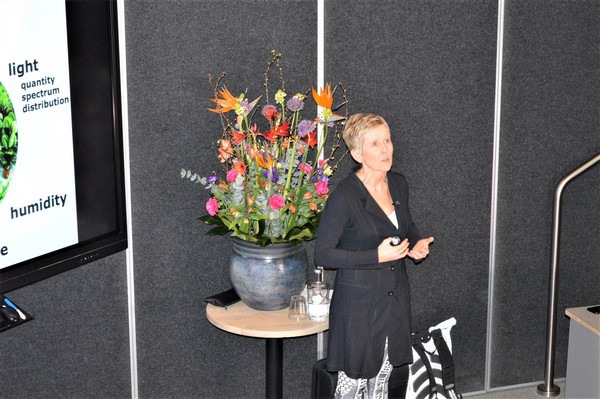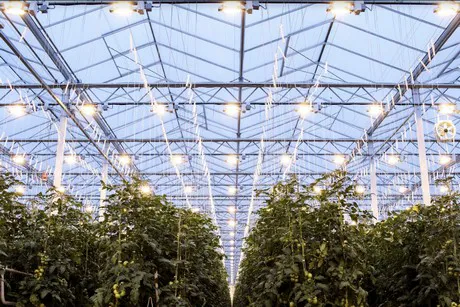Diffuse light has been a much discussed topic in recent years in greenhouse horticulture. Many new greenhouses are equipped with diffuse glass, with seasonal coatings, or other means to ensure that the light entering the greenhouse becomes diffuse.
But what exactly are the benefits of diffuse light? On an evening organized by Ludvig Svensson, Silke Hemming from Wageningen University & Research spoke about the benefits of diffuse light in the greenhouse.
Silke Hemming, Wageningen University & Research
What is diffuse light?
To get a good picture of what diffuse light can mean for cultivation, one first of all must know what diffuse light is. "Diffuse light is the distribution of light," says Silke. “When the sun is shining directly on the greenhouse, the light also comes in directly, more focused.
“Diffuse light is light that enters the greenhouse from all directions, when it is cloudy, for example, the light is diffuse, but then the intensity of the light is less. Additionally, as a grower you naturally do not want to be dependent on the weather, so you use screens, seasonal coatings or other materials to make the light diffuse.”
What are the effects of diffuse light?
Now that we know what diffuse light is, what are its effects on the cultivation? First, Silke notes that the research that has been conducted concerns the effects of the same amount of diffuse light and direct light. "There was a study by a PhD student who looked at the various factors that make diffuse light effective in tomato cultivation," says Silke.
“Various aspects were reviewed, such as horizontal light distribution, vertical light distribution, photosynthesis capacity of the crop and the adaptation of the plant's morphology. Because of these effects, growers must learn to grow in a different way with diffuse light."

Photo of the MightyVine greenhouse, equipped with diffused glass
Higher photosynthesis capacity
The research showed that diffuse light had an effect on all these aspects. Diffuse light resulted in better horizontal and vertical light distribution, as a result of which the foliage intercepts more light on average. "This in turn has the consequence that the photosynthesis capacity is higher in the foliage in diffuse light than in direct light," according to Silke.
“In a cucumber crop, we took measurements of the greenhouse air temperature and there was no difference between direct or diffuse light, because it is about the same light intensity. But with the plant temperature there was a difference. In the middle of the day in particular, the plant temperature was higher in the department with direct light than in the department with diffuse light. The plants in the diffuse department were also less stressed."
All these effects of diffuse light result in good consequences for the cultivation. "We see that a higher light distribution in tomato results in a higher yield," says Silke. "In addition, we see that in pot plant tests that the plants grow faster and produce a higher biomass faster, and were of good quality."
A higher intensity?
Yet there was still one question remaining: ‘What if I have diffuse light and increase the intensity of the light?’ "To test this, two cultivation trials have been set up," says Silke. “In trial one, more light is allowed in, a greater temperature integration maintained and also a higher moisture content used.
In trial two, everything was further increased: an even higher intensity, temperature integration and moisture content. ”The results? "With trial one, mostly positive developments were seen, better quality, better growth, etc. Trial two turned out to exceed the limit and the effect was counterproductive."
